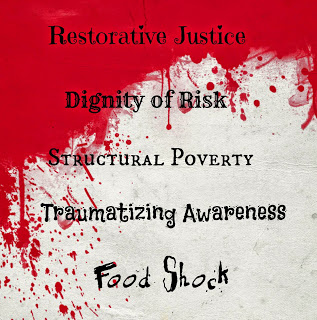Why I Teach a CL Course, or, Any Course
@yinbk @GoogleGuacamole @merryspaniel @Autumm absolutely. so much to unlearn before ppl can even start. why i made #ed1to1 slow/low-stakes.
— Bonnie Stewart (@bonstewart) July 16, 2015
#Students are the #heart of my work & always will be. They are our #hope. #WisconsinIdea #OurUW — Sara Goldrick-Rab (@saragoldrickrab) July 17, 2015
To reflect is to think, ponder, or meditate. Some people write blog reflections in double-quick time. I can’t. Thinking takes time; and in my world, blog reflections consume time, which I don’t have a lot of now, particularly when an online connected learning course is going on. My students’ blog posts take priority. Reading everyone of them and writing quality comments take precedence over sleep, my own blogging, or any projects right now. My students are my priority.
If I think about it, my obsession seems ludicrous. And I’m not blogging about it to make myself seem virtuous. Virginia State (my employer) does not pay me extra — besides being an instructional designer — to teach a 3-credit undergraduate course. I am still on the mend from the complications of last Summer. I should be sleeping more. Why then do I/we (my other Connected Learning/CL colleagues this summer) stay up late reading blog post after blog post?
Because our students matter. They are our future.
I taught for 12 years in K12-13 schools and 3 more in the post-secondary polytechnic in Singapore. When I arrived in the USA, I thought I’d never teach again, and that I’d try something new. I couldn’t. I moved from a cushy corporate job back into graduate school and slogged through a doctoral program to find myself back in education.
At the heart of me is the teacher wanting to make the most impact in my limited life for students/learners — whether it be in instructional design or teaching.
Yes, designing and teaching a connected learning course for the first time without any TA, or co-instructor, is exhausting. It is an arduous task, trying to cajole my students to make paradigm shifts and unlearn from systemic institutional ways they have cultivated to “learn” and be “educated.” I experienced first-hand for myself what it was like to dive into the sea of CL when I returned from leave in October 2014. I nearly drowned.
It took me many months to learn how to tweet and build up a learning network. In a compressed course of 7.5 weeks, I will not let my students drown in the CL sea. Initially, my course was less structured and explicitly written. But as the course unfolded, I saw and learned how much my students had to unlearn and relearn, and all these due to no fault of theirs. We may want our students to learn CL but they have never been given much or any opportunity to question, problem-find, to connect, to have freedom, and to have a voice. Do we remember or know what it is like to find our voice in the angsty years of adolescence? How long did it take you to find your voice? Are you still looking?
So I had to spend time preparing my students for CL and helping them to make the shift. This included designing more structure, more explicitness and more direct teaching of new concepts. Other factors complicated the learning. Everyone of them was working full-time (at least 40 hours). They could only connect after work or during a break. Some have partners or children to take care of. One is taking multiple courses at the same time. They were not as connected as I/we wish they were. One had no internet access at home and eventually dropped out. The small enrollment size of my course means the critical mass required to make CL work its magic was missing. Connecting them to #CLMOOC through #F5F turned flat due to many reasons, some still to be analyzed.
All these (and more to blog about) didn’t detract from my desire to make this course as meaningful as it could be. Although my students couldn’t be as connected as I desired, they were still learning, they were still trying. I still want them to be successful. My role as a teacher, leader, facilitator and coach is to help them overcome the odds life has stacked against them to achieve great things. I know what it means for my parents to put me through school. I was the first one to go to college in my family and a first-generation scholar. I want my students to go as far as they can, in formal or informal learning.
And I will gladly sleep less for 1.5 weeks more so that we can make the most of this time to learn together.
I’m not some fabulous award-winning teacher, but I know that what I value influences how I teach. As Parker Palmer wrote:
“Good teaching cannot be reduced to technique; good teaching comes from the identity and integrity of the teacher… Then teaching can come from the depths of my own truth — and the truth that is within my students has a chance to respond in kind.”
Not everyone is called to be a teacher. For those who are, thank you for the courage to teach and for the courage to stand up for our students.



